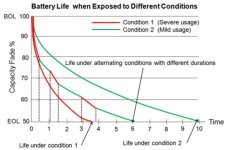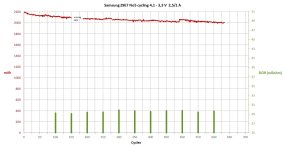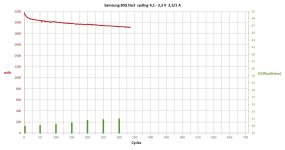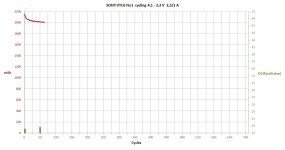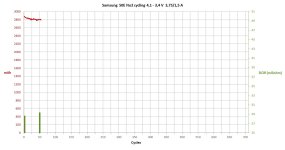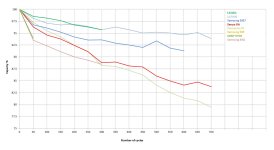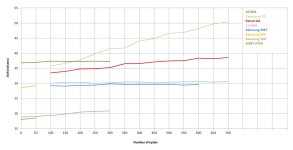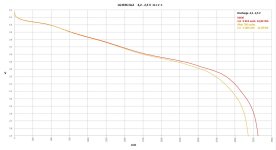eMark said:
To get a true representation of battery ageing or wearout, the tests must be run with complete batteries ... just as they would be in the planned application.
Similarly, extrapolating the performance of the whole population of batteries from a sample of one [cell] can also give unreliable results and erroneous conclusions . For reliable predictions, testing for each stress factor should be performed on several samples. ... https://www.mpoweruk.com/reliability.htm
Some may assume that the individual cells being tested are giving us a real-life DCIR application that's representative of a DIY battery of new brand name cells (e.g. 10S5P, 14S8P, etc.) after say 150 cycles, 250 cycles, etc. Capacity inpedance is crucial (DCIR) to cycle life longevity and yet docware's bench tests only represent (IMO) at most 50% of the total story of a DIY battery's cycle life longevity before EOL. There are innumerable real-life variables (read entire article) that determine/decides the EOL of an 18650 DIY battery. Possibly the most important real-life variable (IMO) that is near impossible to track is
abuse and then defining abuse.
Thats right, but imagine how many different tests you would have to perform already with one given cell in order to find out "the other 50% of the story".
You would have to do individial cylce tests at different ambient temperatures, different charge and discharge current, different cut off voltages during charge and discharge etc etc..
Then if you go with the type of cell which suit the most for your purpose and building a DIY pack with dozends or hundred cells, other things will come into play which will effect lifetime of this pack as a whole, like equal curren flow through all cells (symmetric load), equal temperatures between the first to the last cell etc etc.
I totally agree that one cannot conclude lifetime or cycle life from one single cell to a (DIY)pack, and most annoying thing i find is that when you really did everything properly when assembling your own pack, there still can be those unknown things like the issue with self discharge because of production problems or whatever it has been why 30Q sucks so much.
The best cycle life on paper does help you quasi nothing if your 1000$ pack starts to drift apart after just 50 cycles, whether it is because of issues ex factory, or those "self made problems" like uneven current flow, soldering for too long time on some cells, leaky cans from spot welding which get overlooked etc
I am really thankful that docware is doing those tests and share his findings here, so big thanks to you :thumb:


